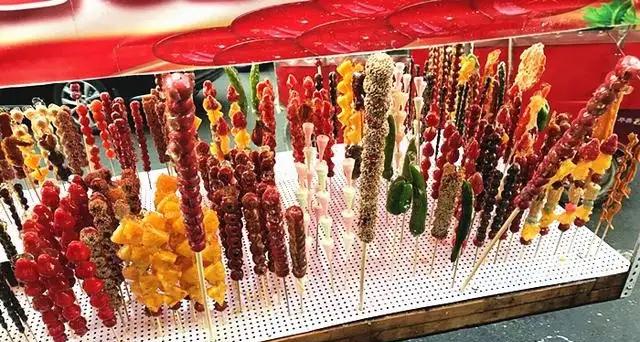The Economics of Candied Hawthorn Stands at Harbin Ice World
A recent auction for nine candied hawthorn retail spots at China’s Harbin Ice and Snow World set a minimum bid of 1 million yuan. This article analyzes the business viability and pricing implications of this high-profile auction in the iconic winter tourism destination.

The recent announcement of a 1 million yuan starting bid for candied hawthorn retail spots at Harbin Ice and Snow World has sparked widespread discussion about the economics of winter tourism in northeastern China. The auction covers nine retail locations within the park, with each successful bidder required to invest an additional 500,000 yuan in custom-designed stalls that match the winter wonderland theme.
The economics of these retail spots are intricately tied to Harbin Ice World’s remarkable success. During the 2023-2024 winter season, the park welcomed 2.71 million visitors over 61 days, averaging 44,000 daily visitors. This massive foot traffic suggests strong revenue potential for food vendors, particularly those selling traditional winter treats like candied hawthorn skewers.
The official price guidelines set by the park management are noteworthy. Strawberry skewers (6 pieces) are priced at 30 yuan, mountain hawthorn skewers (9 pieces) at 15 yuan, and mixed fruit skewers at 25 yuan. These prices, while higher than street vendors outside, align with typical tourist destination pricing in China.
Financial analysis indicates that vendors need to sell approximately one skewer every two minutes per stall to break even, assuming they secure the spots at the minimum bid price. This translates to roughly 278 skewers per stall daily. Given the park’s massive daily visitor numbers, achieving these sales targets appears feasible, with only about 6% of visitors needing to purchase skewers.
However, several factors complicate the investment decision. The harsh winter climate of Harbin, with temperatures often dropping below -30°C, naturally limits outdoor eating. The operating season is also weather-dependent, typically lasting 60-70 days. Additionally, competition from unofficial vendors outside the park could impact sales.
The park’s stringent quality requirements add another layer of consideration. Vendors must maintain proper licensing, submit regular quality inspection reports, and face penalties for pricing violations. While these regulations protect consumer interests, they also increase operational complexity.
Harbin Ice World’s recent surge in popularity, partly due to viral social media coverage, suggests strong future potential. The park is expanding from 810,000 to 1 million square meters, setting a new Guinness World Record. This expansion, coupled with the upcoming 2024 Asian Winter Games, indicates growing tourism prospects for the region.
The success of these candied hawthorn stands will likely depend on vendors' ability to innovate beyond basic offerings. Successful bidders might need to develop premium products, create engaging social media content, and build brand recognition to maximize returns on their substantial investment.
For Harbin’s winter tourism industry, these high-value retail auctions represent a significant shift toward premium experiences and professional operations. Whether this business model proves sustainable will serve as an important indicator for the evolution of China’s winter tourism economy.